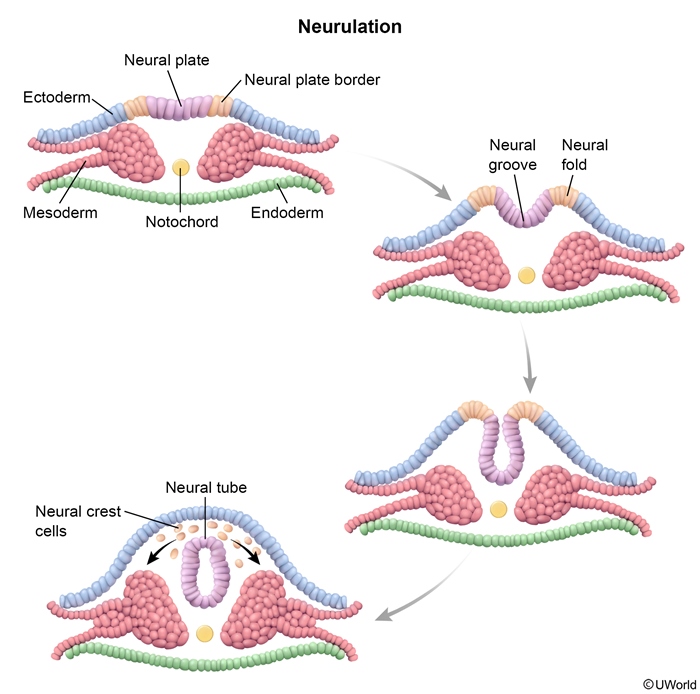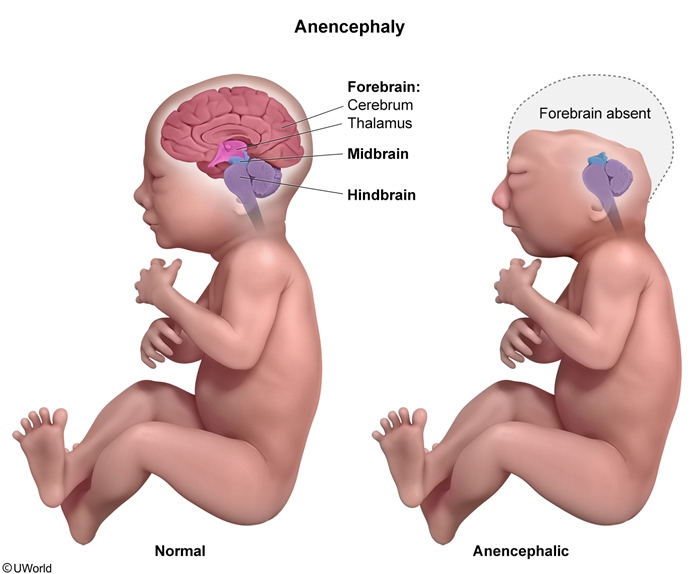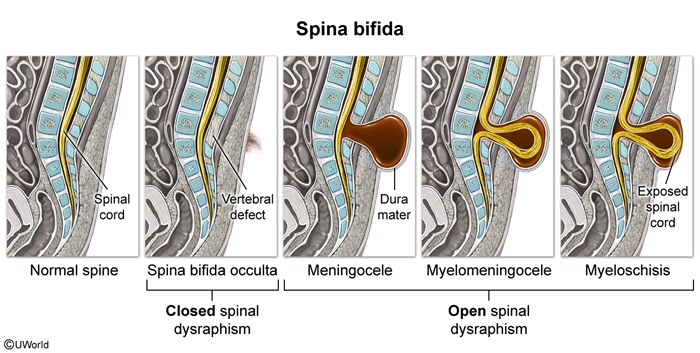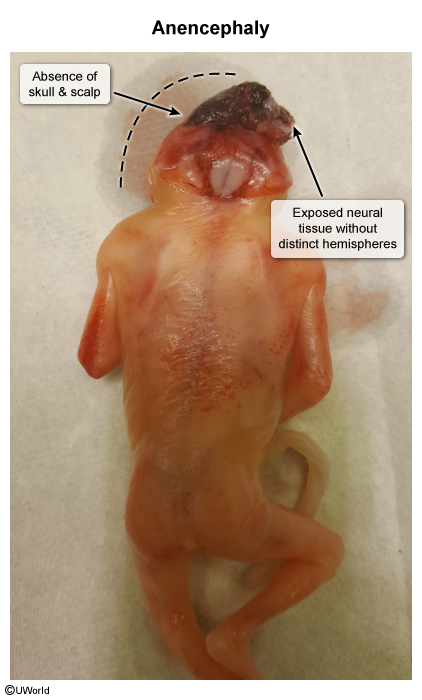Neural Tube Defects
Article Sections
Introduction
Neural tube defects (NTDs), sometimes called spinal dysraphisms, are congenital malformations arising from incomplete closure of the neural tube during embryonic development. They are among the most common birth defects, with varying degrees of severity and clinical implications. The most prevalent forms of NTDs include anencephaly, myelomeningocele, and spina bifida occulta.
Pathogenesis
The CNS develops via neurulation during the third and fourth week gestation (Figure 1). During the first stage of neurulation (primary neurulation), the neural plate forms from the ectoderm. The lateral edges of the plate, known as neural folds, migrate toward the midline and fuse. Fusion begins in the cervical region and extends rostrally and caudally, forming the neural tube, which is the precursor to the brain and spinal cord. The open ends of the neural tubes, or neuropores, close at the end of the fourth week. Following primary neurulation, secondary neurulation occurs, during which the caudal spinal cord forms from mesenchymal cells that integrate with the existing neural tube.
Continue Learning with UWorld
Get the full Neural Tube Defects article plus rich visuals, real-world cases, and in-depth insights from medical experts, all available through the UWorld Medical Library.
Figures



Images
